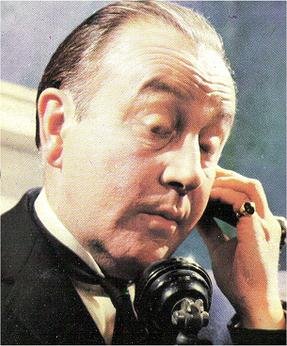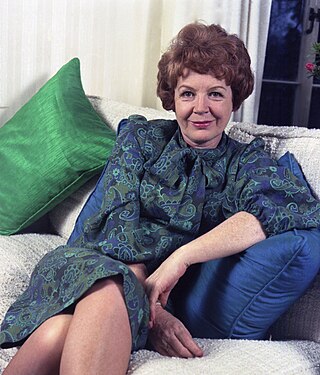
Dennistoun Franklyn John Rose Price was an English actor. He played Louis Mazzini in the Ealing Studios film Kind Hearts and Coronets (1949) and the omnicompetent valet Jeeves in 1960s television adaptations of P. G. Wodehouse's stories.

Stewart Granger was a British film actor, mainly associated with heroic and romantic leading roles. He was a popular leading man from the 1940s to the early 1960s, rising to fame through his appearances in the Gainsborough melodramas.

Margaret Mary Day Lockwood, CBE, was a British actress. One of Britain's most popular film stars of the 1930s and 1940s, her film appearances included The Lady Vanishes (1938), Night Train to Munich (1940), The Man in Grey (1943), and The Wicked Lady (1945). She was nominated for the BAFTA Award for Best British Actress for the 1955 film Cast a Dark Shadow. She also starred in the television series Justice (1971–74).

Gainsborough Pictures was a British film studio based on the south bank of the Regent's Canal, in Poole Street, Hoxton in the former Metropolitan Borough of Shoreditch, northeast London. Gainsborough Studios was active between 1924 and 1951. The company was initially based at Islington Studios, which were built as a power station for the Great Northern & City Railway and later converted to studios.

The Wicked Lady is a 1945 British costume drama film directed by Leslie Arliss and starring Margaret Lockwood in the title role as a nobleman's wife who becomes a highwaywoman for the excitement. It had one of the largest audiences for a film of its period, with an estimated British attendance of 18.4 million seeing it in cinemas, according to a 2004 ranking of the most popular sound films in Britain. In the list, compiled by the British Film Institute for Channel 4, it was placed ninth overall, and was the second-most successful British film, behind only Spring in Park Lane (1948).

Phyllis Hannah Murray-Hill, known professionally as Phyllis Calvert, was an English film, stage and television actress. She was one of the leading stars of the Gainsborough melodramas of the 1940s such as The Man in Grey (1943) and was one of the most popular movie stars in Britain in the 1940s. She continued her acting career for another 50 years.

Jean Kent, born Joan Mildred Field was an English film and television actress.

The Man in Grey is a 1943 British film melodrama made by Gainsborough Pictures; it is considered to be the first of a series of period costume dramas now known as the "Gainsborough melodramas". It was directed by Leslie Arliss and produced by Edward Black from a screenplay by Arliss and Margaret Kennedy that was adapted by Doreen Montgomery from the 1941 novel The Man in Grey by Eleanor Smith. The film's sets were designed by Walter Murton.
Arthur Crabtree was a British cinematographer and film director. He directed films with comedians such as Will Hay, the Crazy Gang and Arthur Askey and several of the Gainsborough melodramas.

A Place of One's Own is a 1945 British film directed by Bernard Knowles. An atmospheric ghost story based on the 1940 novel of the same title by Osbert Sitwell, it stars James Mason, Barbara Mullen, Margaret Lockwood, Dennis Price and Dulcie Gray. Mason and Mullen are artificially aged to play the old couple. It was one of the cycle of Gainsborough melodramas.
Leslie Arliss was an English screenwriter and director. He is best known for his work on the Gainsborough melodramas directing films such as The Man in Grey and The Wicked Lady during the 1940s.

Fanny by Gaslight is a 1944 British drama film, directed by Anthony Asquith and produced by Gainsborough Pictures, set in the 1870s and adapted from a 1940 novel by Michael Sadleir.
Edward Black was a British film producer, best known for being head of production at Gainsborough Studios in the late 1930s and early 1940s, during which time he oversaw production of the Gainsborough melodramas. He also produced such classic films as The Lady Vanishes (1938).

Patricia Roc was an English film actress, popular in the Gainsborough melodramas such as Madonna of the Seven Moons (1945) and The Wicked Lady (1945), though she only made one film in Hollywood, Canyon Passage (1946). She also appeared in Millions Like Us (1943), Jassy (1945), The Brothers (1947) and When the Bough Breaks (1947).

Caravan is a 1946 British black-and-white drama film directed by Arthur Crabtree. It was one of the Gainsborough melodramas and is based on the 1942 novel Caravan by Eleanor Smith.

Lady Eleanor Furneaux Smith was an English writer and active member of the Bright Young Things.
The Gainsborough melodramas were a sequence of films produced by the British film studio Gainsborough Pictures between 1943 and 1947 that conformed to a melodramatic style. The melodramas were not a film series but an unrelated sequence of films that had similar themes that were usually developed by the same film crew and frequently recurring actors who played similar characters in each. They were mostly based on popular books by female novelists and they encompassed costume dramas, such as The Man in Grey (1943) and The Wicked Lady (1945), and modern-dress dramas, such as Love Story (1944) and They Were Sisters (1945). The popularity of the films with audiences peaked mid-1940s when cinema audiences consisted primarily of women. The influence of the films led to other British producers releasing similarly themed works, such as The Seventh Veil (1945), Pink String and Sealing Wax (1945), Hungry Hill (1947), The White Unicorn (1947), Idol of Paris (1948), and The Reluctant Widow (1950) and often with the talent that made Gainsborough melodramas successful.

Caravan is a melodramatic novel by the British writer Lady Eleanor Smith first published in 1942. A young Englishman James Darrell goes on the road living with the Romany people in England while trying to make enough money as a writer to marry his sweetheart Oriana. However, she does not wait for him and marries a wealthy young Englishman. James then undertakes a mission to Spain for a business friend, while there he is attacked and robbed. He is rescued by a gypsy woman but he has lost his memory. Having lost his memory, he marries the gypsy girl, Rosal, without knowing of his former life in Britain. When his memory returns he resents the gypsy girl for deceiving him but stays with her and works as a secretary for a famous bullfighter. When Rosal is accidentally killed by the bullfighter the hero goes to Morocco. Upon his return to England his book on his journeys in Spain make him a famous and wealthy man. He reunites with his first love, Oriana, who is trapped in a loveless marriage. The book is written as a young reporter is sent to interview James Darrell on the occasion of his 70th birthday, and is written as a "flashback" by the old author.
Elizabeth Haffenden was a British costume designer. In a career spanning over four decades, she is recognized for her prolific work across stage and screen. She is perhaps best known for creating the costumes for most of the Gainsborough melodramas. Haffenden has been nominated for the Academy Award for Best Costume Design twice, for Ben-Hur (1959) and A Man for All Seasons (1966), winning both times.
Maurice Ostrer was a British film executive. He was best known for overseeing the Gainsborough melodramas. He was head of production at Gainsborough Studios from 1943–46, taking over from Edward Black. He resigned from the studio in 1946 after a disagreement with J. Arthur Rank, who had taken over the studio. Ostrer left the film industry and went to work in textiles.














